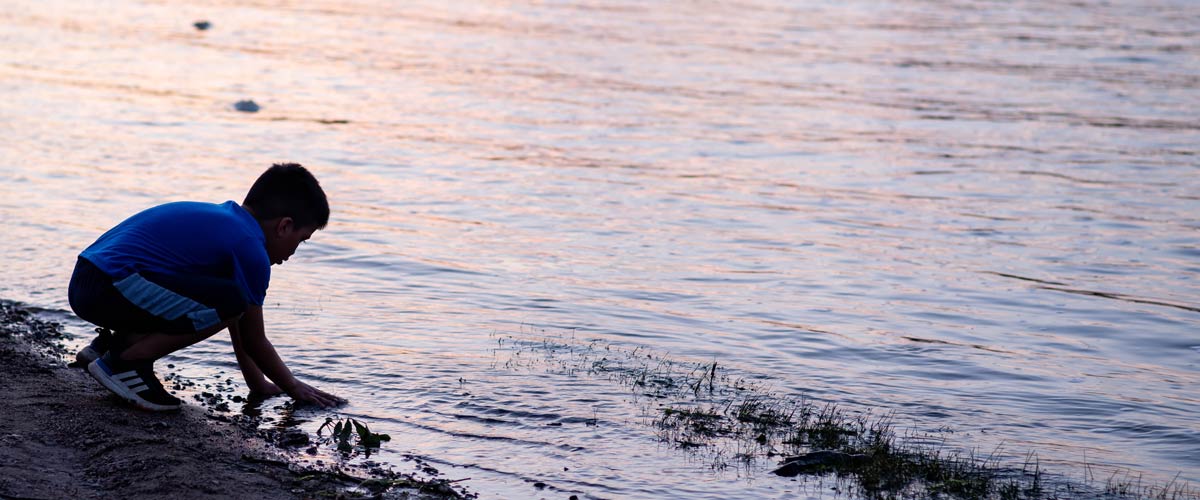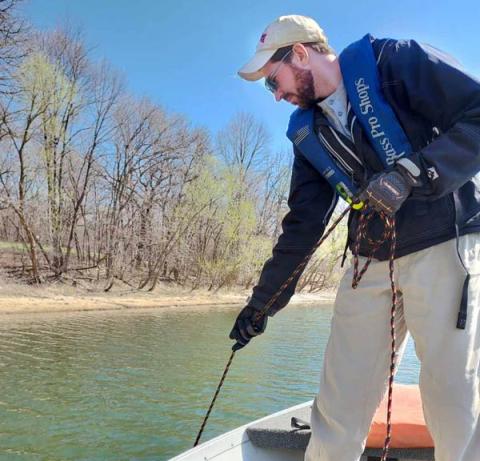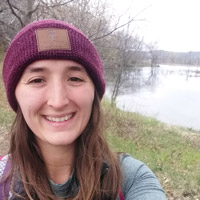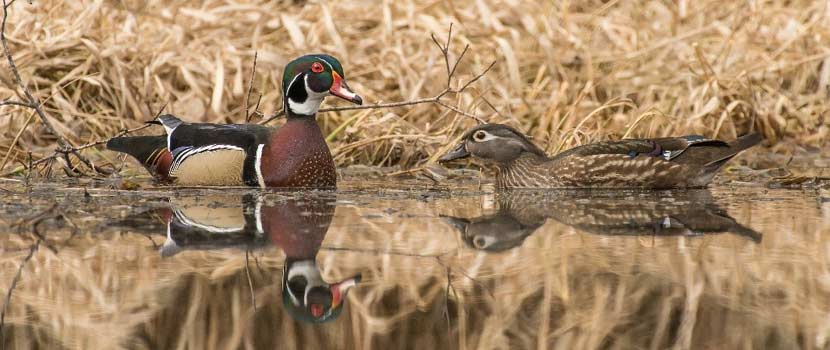
H2O Health: An Introduction to Water Resources Management
By: Zoe Bakken-Heck
July 25, 2023
Category: Resource Management
Minnesota is a land of more than 10,000 lakes, streams and waterways. Being surrounded by these, it’s no wonder why we are a state that loves water. Whether we are using water as part of recreation, sports or working, or in our daily lives, we understand that water is a precious resource that must be cared for. But many people may not think much about who takes care of the water and how they do so.
This is where water resources professionals come in. We, in the Three Rivers water resources department, work to take care of, monitor, research and preserve one of our most important resources and cultural influences in Minnesota. Between the five full-time and three seasonal workers, our water resources team monitors 35 lakes, 18 streams and 14 beaches.

Think of the water resources team as water doctors. We take care of our waters to make sure they stay healthy, similar to people going to the doctor in hopes of keeping their health in check. Keeping water healthy helps keep others healthy: from our communities to our wildlife to the land surrounding the water.
The key to keeping healthy water is monitoring our waterbodies. We do this by going out in the field and checking the vitals of our waterways. We take measurements every time we visit a body of water, just like at the doctor’s office when they take blood pressure, check your heartbeat and make sure all your vitals are good. For water, the criteria we measure include dissolved oxygen, pH, depth, conductivity and aquatic invasive species. All of these data points give us an idea of how healthy a body of water is.

Now, say you go to the doctor and are worried about an issue, or it’s a visit where they need your annual bloodwork. The staff at the doctor’s office may take a sample and then bring it to a lab for a deeper look. We do the same with our water. At most visits, we take a sample for further analysis because we can’t measure everything in the field . This is where we learn about the chemical side of the water we collect. Properties, like the amount of sulfate, nitrate, phosphorus or bacteria in the water, are all revealed to us through lab analysis.

After gathering data from the field and the lab, we compile them into reports that help us determine if the waters are unhealthy or healthy, or, in water resource terms, impaired or unimpaired. If the results show that water quality is impaired, we implement projects to improve the quality, or we assess the effectiveness of projects that are already in progress. Imagine this portion of our job as the doctor’s recommendations. At a doctor’s visit, if you find out you have abnormally high blood pressure, the doctor may give you some thoughts on ways to reduce the high blood pressure, and actions to take to prevent any larger problems like a heart attack.
The project implementation stage of water resources aims to do the same to bodies of water. If a lake has an “unhealthy” level of one or multiple nutrients — that is to say, the amount present in the lake is higher than the state standard — then we must determine its cause. At the doctor’s office, a doctor may consider: Is your high blood pressure a symptom of the environment you’re in or if a genetic predisposition? These are the questions we ask, but in terms of our parks’ water quality: Is unhealthiness from the nearby environment —the connected lakes and streams, aka the watershed — or from the lake itself?
Once a body of water becomes healthy, or unimpaired, it doesn’t mean we stop monitoring it. The monitoring process is not linear, but cyclical. We continue to monitor bodies of water on a bi-weekly schedule so we can ensure the effectiveness of the projects we implement. These are the follow-up visits, one could say, except for a long period of time with a higher frequency than most doctors would suggest for any human ailment.

We in water resources hope to maintain sound water quality throughout our park system. We doctor our “sick” lakes and streams back to a healthy point or maintain healthy ones’ integrity through strong monitoring practices. We keep track of their physical characteristics, the chemical properties, and their input from the waters that drain into them. By doing this, we assure the safety of everyone using these resources. Additionally, we provide necessary information to the public on recreational and sport use, as well. Water is an extremely important resource that must be taken care of if we want to live satisfying lives. We are here to help accomplish that goal. Unhealthy water leads to unhealthy people and communities — and we’re here to work to maintain a healthy water system so people thrive.
About the Author

Zoe Bakken-Heck is a water resource technician for Three Rivers, based out of the Facilities Operation Center at French Regional Park and traveling all around the park district to collect water samples and monitor water. Zoe enjoys playing ultimate frisbee (no, not disc golf), and doing most anything outside, including reading, biking and eating.
Related Blog Posts
Giving Wood Ducks a Home in Three Rivers
By: Steven Hogg
Wood ducks are one of the most spectacular birds in North America. Learn what Three Rivers is doing to provide the space they need to nest and thrive in our parks.
Wetland Management: Drawdowns
By: Steven Hogg
Managing wetland habitat is no easy task, but is necessary in stimulating plant growth, increasing animal and plant diversity, and controlling invasive species. Learn how Three Rivers Park District manages wetlands with drawdowns and explore some of the specific goals in managing this special habitat.
At Three Rivers, swimming waters are tested weekly to ensure they are safe for swimmers. Learn about what water quality crews look for, how they decide to close a beach, and what you can do to help improve water quality.



